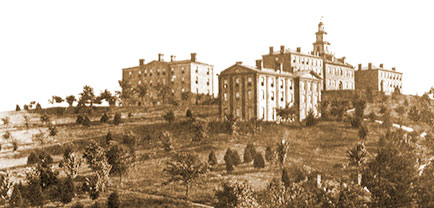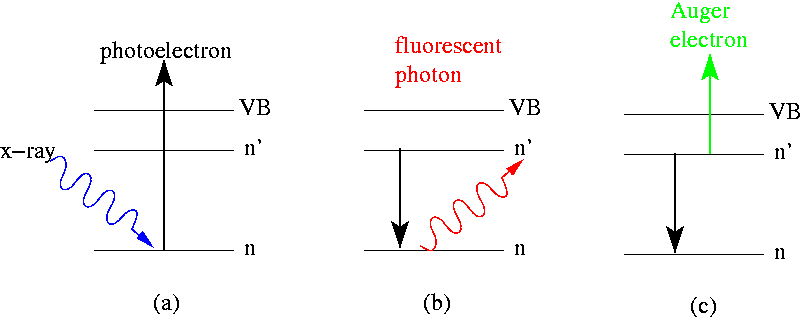|
E. Ward Plummer
Earl Ward Plummer (October 30, 1940 – July 23, 2020) was an American physicist. His main contributions were in surface physics of metals. Plummer was a Professor of Physics at Louisiana State University and the University of Pennsylvania prior to that. Biography Plummer received a Bachelor of Arts degree from Lewis & Clark College in 1962 and completed his Ph.D. degree in physics at Cornell University in 1967, working with Prof. Thor Rhodin. His thesis work was on atomic binding of 5-d transition-metal atoms using Field ion microscope (FIM). Plummer accepted a National Research Council Postdoctoral Fellowship at the National Bureau of Standards (now called The National Institute of Standards and Technology (NIST)) in the fall of 1967 working with Russ Young, and he stayed as a staff scientist until the fall of 1973. His work included field electron emission and photoemission studies of surfaces. NIST selected his 1969 paper "Resonance Tunneling of Field-Emitted Electrons ... [...More Info...] [...Related Items...] OR: [Wikipedia] [Google] [Baidu] |
Field Ion Microscope
The Field ion microscope (FIM) was invented by Müller in 1951. It is a type of microscope that can be used to image the arrangement of atoms at the surface of a sharp metal tip. On October 11, 1955, Erwin Müller and his Ph.D. student, Kanwar Bahadur (Pennsylvania State University) observed individual tungsten atoms on the surface of a sharply pointed tungsten tip by cooling it to 21 K and employing helium as the imaging gas. Müller & Bahadur were the first persons to observe individual atoms directly. Introduction In FIM, a sharp (<50 nm tip radius) metal tip is produced and placed in an chamber, which is backfilled with an imaging gas such as or |
Institute For Scientific Information
The Institute for Scientific Information (ISI) was an academic publishing service, founded by Eugene Garfield in Philadelphia in 1956. ISI offered scientometric and bibliographic database services. Its specialty was citation indexing and analysis, a field pioneered by Garfield. Services ISI maintained citation databases covering thousands of academic journals, including a continuation of its longtime print-based indexing service the Science Citation Index (SCI), as well as the Social Sciences Citation Index (SSCI) and the Arts and Humanities Citation Index (AHCI). All of these were available via ISI's Web of Knowledge database service. This database allows a researcher to identify which articles have been cited most frequently, and who has cited them. The database provides some measure of the academic impact of the papers indexed in it, and may increase their impact by making them more visible and providing them with a quality label. Some anecdotal evidence suggests that appeari ... [...More Info...] [...Related Items...] OR: [Wikipedia] [Google] [Baidu] |
Los Alamos Neutron Science Center
The Los Alamos Neutron Science Center (LANSCE), formerly known as the Los Alamos Meson Physics Facility (LAMPF), is one of the world's most powerful linear accelerators. It is located in Los Alamos National Laboratory in New Mexico in Technical Area 53. It was the most powerful linear accelerator in the world when it was opened in June 1972. The technology used in the accelerator was developed under the direction of nuclear physicist Louis Rosen. The facility is capable of accelerating protons up to 800 MeV. Multiple beamlines allow for a variety of experiments to be run at once, and the facility is used for many types of research in materials testing and neutron science. It is also used for medical radioisotope production. LANSCE provides the scientific community with intense sources of neutrons with the capability of performing experiments supporting civilian and national security research. Agencies and programs of the Department of Energy – the National Nuclear Security Admi ... [...More Info...] [...Related Items...] OR: [Wikipedia] [Google] [Baidu] |
Scanning Tunneling Microscopy
A scanning tunneling microscope (STM) is a type of microscope used for imaging surfaces at the atomic level. Its development in 1981 earned its inventors, Gerd Binnig and Heinrich Rohrer, then at IBM Zürich, the Nobel Prize in Physics in 1986. STM senses the surface by using an extremely sharp conducting tip that can distinguish features smaller than 0.1 nm with a 0.01 nm (10 pm) depth resolution. This means that individual atoms can routinely be imaged and manipulated. Most microscopes are built for use in ultra-high vacuum at temperatures approaching zero kelvin, but variants exist for studies in air, water and other environments, and for temperatures over 1000 °C. STM is based on the concept of quantum tunneling. When the tip is brought very near to the surface to be examined, a bias voltage applied between the two allows electrons to tunnel through the vacuum separating them. The resulting ''tunneling current'' is a function of the tip position, appl ... [...More Info...] [...Related Items...] OR: [Wikipedia] [Google] [Baidu] |
Transition-metal Oxides
An oxide () is a chemical compound that contains at least one oxygen atom and one other element in its chemical formula. "Oxide" itself is the dianion of oxygen, an O2– (molecular) ion. with oxygen in the oxidation state of −2. Most of the Earth's crust consists of oxides. Even materials considered pure elements often develop an oxide coating. For example, aluminium foil develops a thin skin of Al2O3 (called a passivation layer) that protects the foil from further corrosion.Greenwood, N. N.; & Earnshaw, A. (1997). Chemistry of the Elements (2nd Edn.), Oxford:Butterworth-Heinemann. . Stoichiometry (the measurable relationship between reactants and chemical equations of a equation or reaction) Oxides are extraordinarily diverse in terms of stoichiometries and in terms of the structures of each stoichiometry. Most elements form oxides of more than one stoichiometry. A well known example is carbon monoxide and carbon dioxide.Greenwood, N. N.; & Earnshaw, A. (1997). Chemistry ... [...More Info...] [...Related Items...] OR: [Wikipedia] [Google] [Baidu] |
Oak Ridge National Laboratory
Oak Ridge National Laboratory (ORNL) is a U.S. multiprogram science and technology national laboratory sponsored by the U.S. Department of Energy (DOE) and administered, managed, and operated by UT–Battelle as a federally funded research and development center (FFRDC) under a contract with the DOE, located in Oak Ridge, Tennessee. Established in 1943, ORNL is the largest science and energy national laboratory in the Department of Energy system (by size) and third largest by annual budget. It is located in the Roane County section of Oak Ridge, Tennessee. Its scientific programs focus on materials, nuclear science, neutron science, energy, high-performance computing, systems biology and national security, sometimes in partnership with the state of Tennessee, universities and other industries. ORNL has several of the world's top supercomputers, including Frontier, ranked by the TOP500 as the world's most powerful. The lab is a leading neutron and nuclear power rese ... [...More Info...] [...Related Items...] OR: [Wikipedia] [Google] [Baidu] |
The University Of Tennessee, Knoxville
The University of Tennessee (officially The University of Tennessee, Knoxville; or UT Knoxville; UTK; or UT) is a public land-grant research university in Knoxville, Tennessee. Founded in 1794, two years before Tennessee became the 16th state, it is the flagship campus of the University of Tennessee system, with ten undergraduate colleges and eleven graduate colleges. It hosts more than 30,000 students from all 50 states and more than 100 foreign countries. It is classified among "R1: Doctoral Universities – Very high research activity". UT's ties to nearby Oak Ridge National Laboratory, established under UT President Andrew Holt and continued under the UT–Battelle partnership, allow for considerable research opportunities for faculty and students. Also affiliated with the university are the Howard H. Baker Jr. Center for Public Policy, the University of Tennessee Anthropological Research Facility, and the University of Tennessee Arboretum, which occupies of nearby Oak R ... [...More Info...] [...Related Items...] OR: [Wikipedia] [Google] [Baidu] |
ARPES
Angle-resolved photoemission spectroscopy (ARPES) is an experimental technique used in condensed matter physics to probe the allowed energies and momenta of the electrons in a material, usually a crystalline solid. It is based on the photoelectric effect, in which an incoming photon of sufficient energy ejects an electron from the surface of a material. By directly measuring the kinetic energy and emission angle distributions of the emitted photoelectrons, the technique can map the electronic band structure and Fermi surfaces. ARPES is best suited for the study of one- or two-dimensional materials. It has been used by physicists to investigate high-temperature superconductors, graphene, Topological insulator, topological materials, quantum well states, and materials exhibiting charge density waves. ARPES systems consist of a monochromatic light source to deliver a narrow beam of photons, a sample holder connected to a manipulator used to position the sample of a material ... [...More Info...] [...Related Items...] OR: [Wikipedia] [Google] [Baidu] |
Atom
Every atom is composed of a nucleus and one or more electrons bound to the nucleus. The nucleus is made of one or more protons and a number of neutrons. Only the most common variety of hydrogen has no neutrons. Every solid, liquid, gas, and plasma is composed of neutral or ionized atoms. Atoms are extremely small, typically around 100 picometers across. They are so small that accurately predicting their behavior using classical physics, as if they were tennis balls for example, is not possible due to quantum effects. More than 99.94% of an atom's mass is in the nucleus. The protons have a positive electric charge, the electrons have a negative electric charge, and the neutrons have no electric charge. If the number of protons and electrons are equal, then the atom is electrically neutral. If an atom has more or fewer electrons than protons, then it has an overall negative or positive charge, respectively – such atoms are called ions. The electrons of an at ... [...More Info...] [...Related Items...] OR: [Wikipedia] [Google] [Baidu] |
Electron Spectroscopy
Electron spectroscopy refers to a group formed by techniques based on the analysis of the energies of emitted electrons such as photoelectrons and Auger electrons. This group includes X-ray photoelectron spectroscopy (XPS), which also known as Electron Spectroscopy for Chemical Analysis (ESCA), Electron energy loss spectroscopy (EELS), Ultraviolet photoelectron spectroscopy (UPS), and Auger electron spectroscopy (AES). These analytical techniques are used to identify and determine the elements and their electronic structures from the surface of a test sample. Samples can be solids, gases or liquids.Yang Leng; ''Materials Characterization: Introduction to Microscopic and Spectroscopic Methods (Second Edition)''; Publisher John Wiley & Sons, Incorporated 2013; p: 191-192, 221-224.Daintith, J.; ''Dictionary of Chemistry (6th Edition)''; Oxford University Press, 2008; p: 191, 416, 541 Chemical information is obtained only from the uppermost atomic layers of the sample (depth 10 ... [...More Info...] [...Related Items...] OR: [Wikipedia] [Google] [Baidu] |
Photoemission
The photoelectric effect is the emission of electrons when electromagnetic radiation, such as light, hits a material. Electrons emitted in this manner are called photoelectrons. The phenomenon is studied in condensed matter physics, and solid state and quantum chemistry to draw inferences about the properties of atoms, molecules and solids. The effect has found use in electronic devices specialized for light detection and precisely timed electron emission. The experimental results disagree with classical electromagnetism, which predicts that continuous light waves transfer energy to electrons, which would then be emitted when they accumulate enough energy. An alteration in the intensity of light would theoretically change the kinetic energy of the emitted electrons, with sufficiently dim light resulting in a delayed emission. The experimental results instead show that electrons are dislodged only when the light exceeds a certain frequency—regardless of the light's intensity or d ... [...More Info...] [...Related Items...] OR: [Wikipedia] [Google] [Baidu] |



